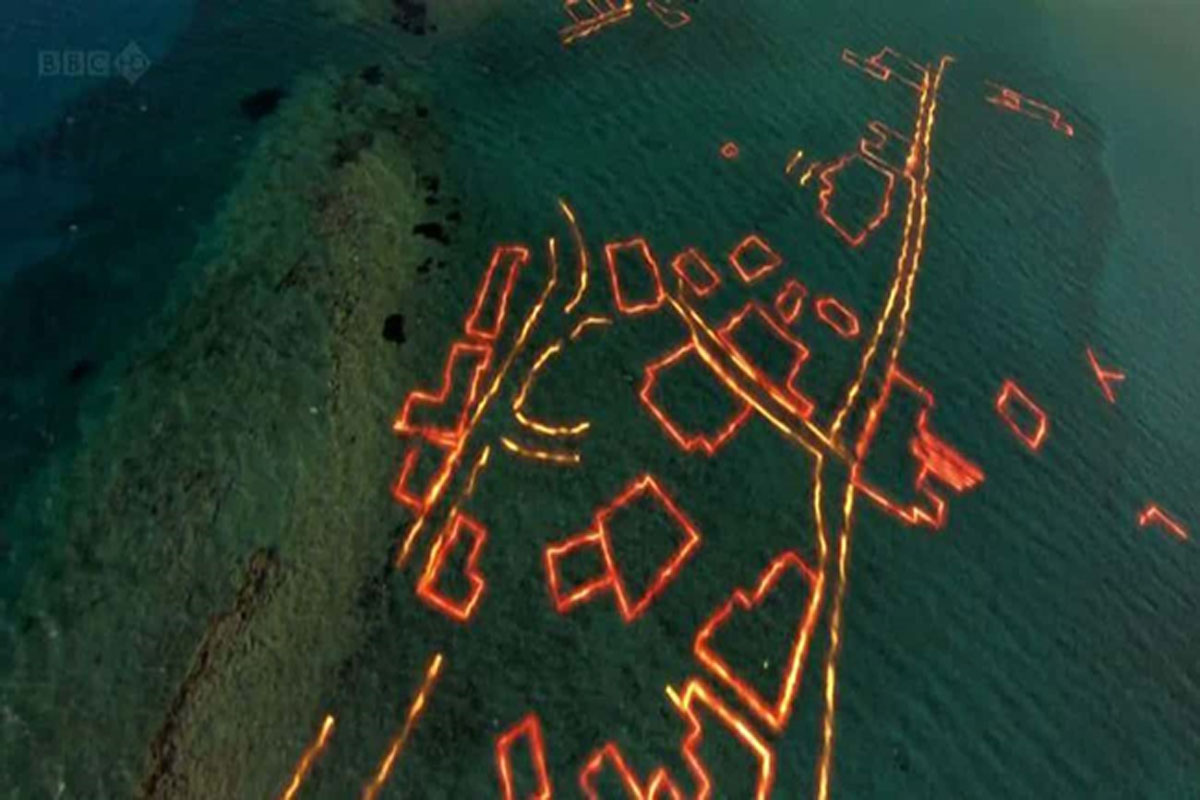
The Strangest Things Found At The Bottom Of The Ocean
Cassie Ramoska
The ocean makes up the bulk of the Earth’s surface and is as vast as it is deep. Astonishingly, 80% of it has yet to be explored. Some of the strangest things found at the bottom of the ocean have recently been uncovered thanks to technological advancements. Scientists are diving down to new depths and making their way through uncharted waters. More and more mysterious relics are being discovered every day.
Some of the most fascinating objects found on the ocean floor include pieces of shipwrecks (including valuables from the Titanic), highly advanced tools from ancient civilizations, underwater tombs of long-forgotten ancestors, and mythical lost cities. However, much to the chagrin of conspiracy theorists, Atlantis has yet to be located.
While the ocean remains an undeniably creepy place to explore, many daring adventurers have answered the challenge and made epic deep dives. They are contributing to the ongoing search by locating some of these totally weird things found in the ocean.
________________________________________
• The World’s Oldest Submerged City
 Photo: City Beneath The Waves: Pavlopetri / BBC
Photo: City Beneath The Waves: Pavlopetri / BBC
Nic Flemming discovered the Greek city of Pavlopetri in 1967. The site dates back to around 5,000 years, making it the oldest settlement ever found underwater. In 2009, the Pavlopetri Underwater Archeology Project launched a massive expedition to map the waterlogged city. During its excavations, the team uncovered ceramics, tombs, roads, courtyards, and building foundations. Many speculate Pavlopetri served as the inspiration for Atlantis, and scientists are still scratching their heads about what caused this city to sink.
• • An Ancient Analog Computer
 Photo: Marsyas / Wikimedia Commons / CC BY-SA 3.0
Photo: Marsyas / Wikimedia Commons / CC BY-SA 3.0
The Antikythera mechanism sat in the ocean for 2,000 years until pieces of the bronze contraption were discovered in 1900. The parts, which were X-rayed in the 1970s, were widely dismissed by historians until 2006. More detailed CT scans of the fragments revealed a multitude of ancient Greek inscriptions, and scientists now believe the machine was used to chart astronomical events across the solar system. However, author Erich von Däniken has made the controversial claim that the machine is a piece of ancient alien technology.
Because the Antikythera mechanism was created around the second century BCE, this phenomenally advanced device can be considered humanity’s first “computer.”
• • A Sunken Ship Full Of Treasure
 Photo: Samuel Scott / Wikimedia Commons / Public Domain
Photo: Samuel Scott / Wikimedia Commons / Public Domain
The wreckage of the San José, a Spanish galleon, was found in 2015 off the coast of Colombia. The ill-fated ship sunk in 1708, along with 600 passengers doomed for an ocean burial. A fight over ownership rights quickly ensued after the discovery that the ship’s cargo contained up to $17 billion in treasure. An American salvage company argued it found the wreck in 1981, long before Colombia laid claim. A Colombian court found that all of the ship’s contents are the property of the Colombian government, however. The country has launched a salvage operation but has run into several legal questions that have slowed the underwater treasure hunt.
• • Parts From A Historic NASA Spacecraft
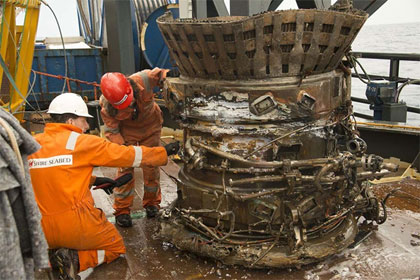 Photo: AstroBlogs / CC BY-NC-SA 4.0
Photo: AstroBlogs / CC BY-NC-SA 4.0
When Apollo 11 launched in 1969, the spacecraft’s five F-1 booster engines detached and sank into the sea. They were forgotten about for decades until Amazon founder and billionaire Jeff Bezos entered the picture in 2012. He privately financed the secret F-1 Engine Recovery expedition in hopes of finding pieces from this historic mission. Using deep-sea sonar equipment, his team was able to locate hundreds of Apollo 11 engine components resting 14,000 feet below the surface. You can see these NASA artifacts for yourself by visiting the Museum of Flight in Seattle.
• • A Century-Old Bottle Of Beer
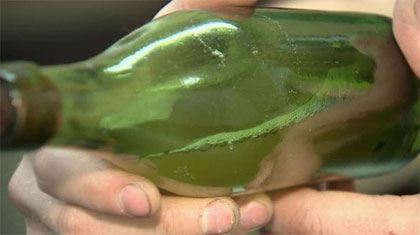 Photo: CBC News
Photo: CBC News
In 2015, an amateur diver found a 125-year-old bottle of brew at the bottom of Canada’s Halifax Harbor. The glass bottle managed to survive decades underwater with the cork remaining intact.
The half-full bottle came from the Alexander Keith’s Brewery, one of North America’s oldest commercial breweries. The bottle was handed over to the brewers for a taste test to see how the pale ale held up after all these years. The brave souls volunteering to sip the beverage predictably responded that it tasted rather salty, but still had the recognizable taste of an ale.
• • Fabled Temples
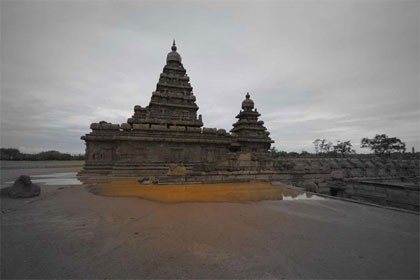 Photo: CProgrammer / Flickr / CC BY-SA 2.0
Photo: CProgrammer / Flickr / CC BY-SA 2.0
For centuries, Indian fables about the seven lost pagodas of Mahabalipuram spread across the world. In the myth, seven beautiful temples brought great wealth to their port city. This angered Indra, king of the gods, and he sunk six of the structures in a jealous rage. All that remained was the Shore Temple, which eventually became a UNESCO World Heritage site. Astonishingly, a 2004 tsunami revealed the submerged pagodas off the city’s coastline.
• • Train Locomotives
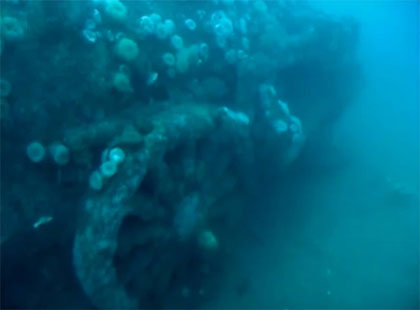 Photo: Deep Sea Detectives: Underwater Train Wreck/The History Channel
Photo: Deep Sea Detectives: Underwater Train Wreck/The History Channel
New Jersey’s waters contain their fair share of shipwrecks thanks to the rough seas of the Atlantic. But it might come as a surprise to learn that other types of transportation have wound up next to these ships. Sometime during the 1850s, two locomotives found their way into the ocean. So far, no one knows how the steam engines ended up 90 feet underwater. Popular theories include falling off a barge during transportation or encountering a storm that pushed them out to sea.
• • Pyramids Off Cuba’s Coast
 Photo: Mystery History / YouTube
Photo: Mystery History / YouTube
In 2001, researchers discovered what appeared to be a sunken city near Cuba. Using sonar imaging, the scientists found smooth, geometric structures made from stone. Large pyramids and circular objects were arranged in a way eerily resembling city planning and seemingly cut directly from the granite. “It was a[s] though we should not be seeing what we were seeing. Our first thought was maybe we found some kind of secret military installation,” said project leader Paulina Zelitsky. Scientists are divided on whether these are human-made relics or if they are simply an unusual natural formation. Until further research is completed, speculation will continue to circulate about this possible “Atlantis of the Caribbean.”
• • A Contested UFO Relic
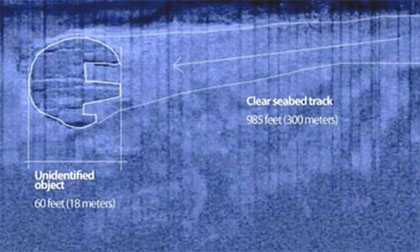 Photo: Unexplained Mysteries / YouTube
Photo: Unexplained Mysteries / YouTube
An odd-shaped object was discovered in 2011 at the bottom of the Baltic Sea. Using sonar imaging, Swedish explorers uncovered a 210-foot artifact that strangely resembles the Millennium Falcon.
Dubbed the “Baltic Sea Anomaly,” no one knows exactly what this object is. Some speculate it could be the remains of a city, while others believe the round structure is a downed UFO. Because electrical equipment tends to fail when near the anomaly, the truth may remain a mystery for some time.
• • A Native American Burial Site
 Photo: Florida Department of State
Photo: Florida Department of State
In 2016, a man came across an unusual bone while diving in Florida’s waters. He sent a photo of his find to an archaeological research team. Intrigued, the scientists set out to locate the bone’s origins. On the seabed, the team found more bones, including skull fragments, and even uncovered carved wooden stakes. They had discovered an ancient Native American burial site from 7,000 years ago now underwater due to rising sea levels. Despite being in the ocean for so long, the organic remains were protected by peat found throughout the bog.
• A Once-Famous Egyptian City
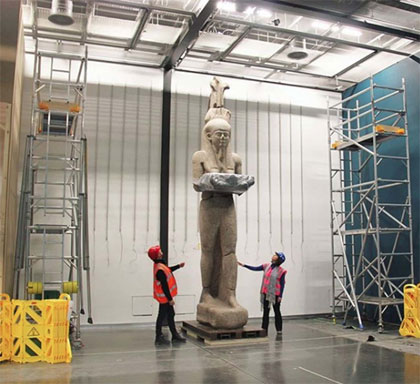 Photo: BritishMuseum / Instagram
Photo: BritishMuseum / Instagram
The prosperous city of Heracleion served as the primary port to Egypt prior to the rise of Alexandria. According to ancient Greek historian Herodotus, Heracleion is also where Helen of Troy and her lover, Paris, sought refuge before fighting with the Greeks broke out. This port’s reign was cut short 1,200 years ago when the city was swallowed up by the Mediterranean Sea. As time went on, the city was thought to be fictional. Then, in the early 2000s, divers discovered a treasure trove of artifacts, including 16 statues, 64 ships, gold coins, inscribed slabs of rock, and numerous sarcophagi, converting this once-mythological city to one worthy of history books.
• • Medicinal Pills Predating The Roman Empire
About 2,000 years ago, a cargo ship capsized off the Italian coast. The wreckage was discovered a few decades ago and excavation quickly followed. Inside the vessel, scientists found wine bottles, glass jars, lamps, and medical equipment. Tin vessels from the ship were X-rayed, revealing tightly sealed medicinal tablets. Following extensive chemical tests, scientists determined these pills were used as a medicinal eyewash.
• • An Ancient Fishing Weir
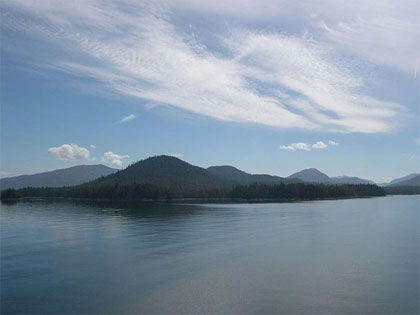 Photo: Upyernoz / Wikimedia Commons / CC BY 2.0
Photo: Upyernoz / Wikimedia Commons / CC BY 2.0
A fishing weir, used to trap fish through a narrow passage of water, was found in 2014 off of a remote Canadian island. The underwater site dates back at least 13,700 years, making it the oldest weir known to man. Researchers believe an ancient civilization living on the island used this weir to collect salmon. Over time, sea levels rose, submerging the weir well below the surface and shrinking the land considerably.
• • A Centuries-Old Pirate Port
Known as the “Wickedest City on Earth,” Port Royal was Jamaica’s bustling pirate haven and the British Royal Navy’s Caribbean headquarters. The port lived up to its rowdy reputation after just 37 years, until an earthquake decimated the city in 1692. Two-thirds of the port slid into the ocean, and fires and hurricanes wiped out the structures remaining above sea level. In the late 1950s, divers began excavating the submerged port and have since uncovered a number of buildings, including a cobbler’s shop, a butchery, and a tavern. Port Royal is so well preserved that it’s often compared to Pompeii.
ranker.com

















